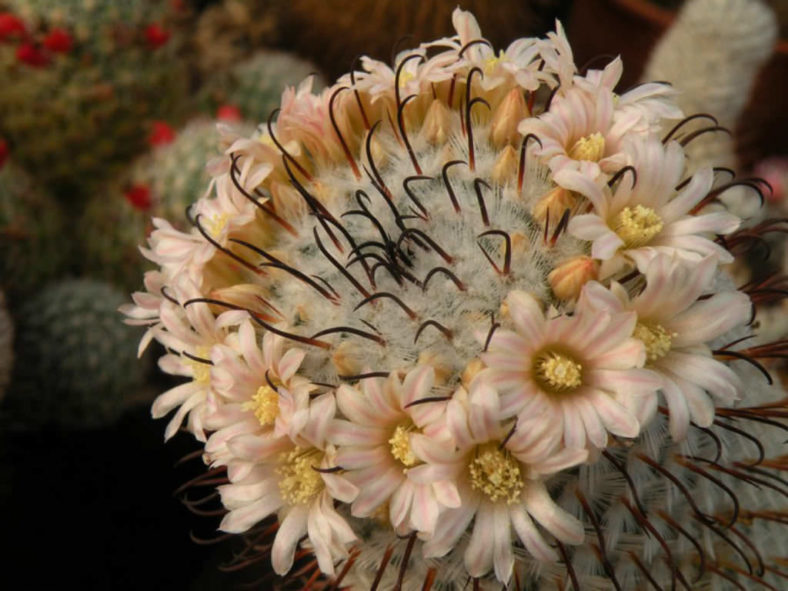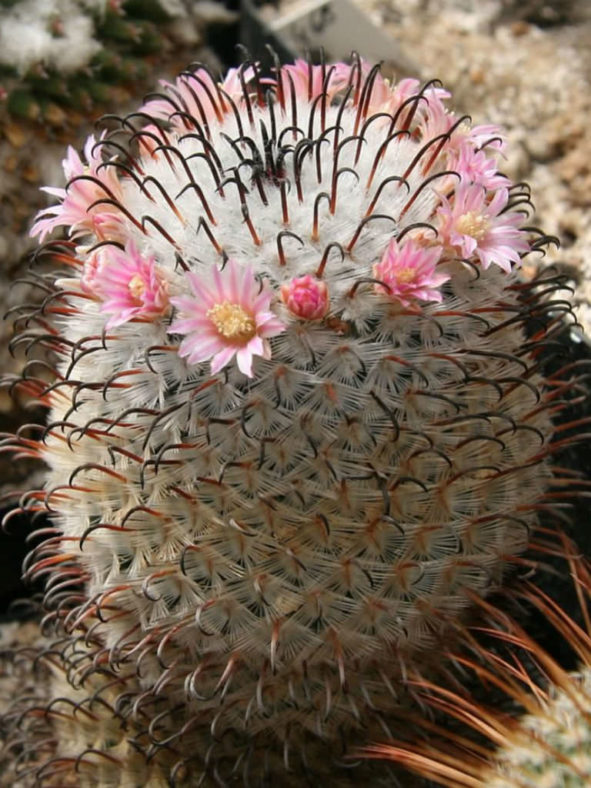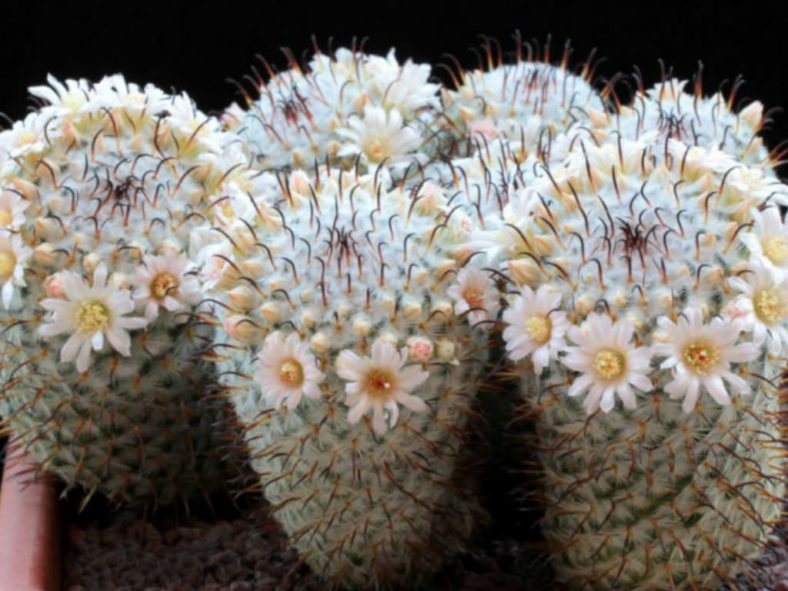Scientific Name
Mammillaria perezdelarosae Bravo & Scheinvar
Synonym(s)
Escobariopsis perezdelarosae, Mammillaria bombycina subsp. perezdelarosae, Mammillaria perezdelarosae subsp. andersoniana, Mammillaria perezdelarosae subsp. perezdelarosae
Scientific Classification
Family: Cactaceae
Subfamily: Cactoideae
Tribe: Cacteae
Subtribe: Cactinae
Genus: Mammillaria
Etymology
The specific epithet "perezdelarosae" (pronounced "per-ez-del-ah-ROH-say") honors Jorge Alberto Pérez de la Rosa (1955-), a Mexican botanist and secretary of the Institute of Botany of the University of Guadalajara, Mexico.
Origin
Mammillaria perezdelarosae is native to central Mexico. It occurs in Jalisco at elevations that range from 6,560 to 8,200 feet (2,000 to 2,400 m).
Description
Mammillaria perezdelarosae, also known as Mammillaria bombycina subsp. perezdelarosae, is a beautiful, small cactus with globular to cylindrical stems covered with conical tubercles tipped with dense clusters of spines. The stems can grow up to 6 inches (15 cm) tall and 2 inches (5 cm) in diameter. While it typically starts as a solitary plant, it gradually produces offsets as it matures. Each areole bears 30 to 60 white radial spines, which can measure up to 0.1 inches (0.25 cm) long. Additionally, there is usually one hooked, dark-brown central spine that can grow up to 0.6 inches (1.5 cm) long.
The flowers are greenish-white, cream, or light pink with a slightly darker mid-stripe and appear at the top of the stems in late winter and spring. They are cup-shaped and can reach a length of 0.8 inches (2 cm) and a diameter of 1 inch (2.5 cm). The fruits are red, smooth, and club-shaped, containing brownish-black seeds.

Hardiness
USDA hardiness zones 9b to 11b: from 25°F (-3.9°C) to 50°F (10°C).
How to Grow and Care
To encourage better flowering, allow the plants to enjoy a cooling period in the winter and suspend watering. Unlike many other cacti, which use their ribs as storage devices, the Mammillaria feature raised tubercles, from which spines emerge. When you water, the tubercles will expand for increased water storage. The flowers appear from the axils of these tubercles on the previous year's growth, which accounts for their interesting halo effect. The cactus mustn't be exposed to prolonged dampness and standing water. Never let your cactus sit in a dish of water. Fertilize during the growing season for the best results.
Repot as needed, preferably during the warm season. To repot a cactus, ensure the soil is dry before repotting, then gently remove the pot. Next, remove the old soil from the roots, removing any rotted or dead roots.
See more at How to Grow and Care for Mammillaria.
Links
- Back to genus Mammillaria
- Succupedia: Browse succulents by Scientific Name, Common Name, Genus, Family, USDA Hardiness Zone, Origin, or cacti by Genus
Photo Gallery
Click on a photo to see a larger version.

